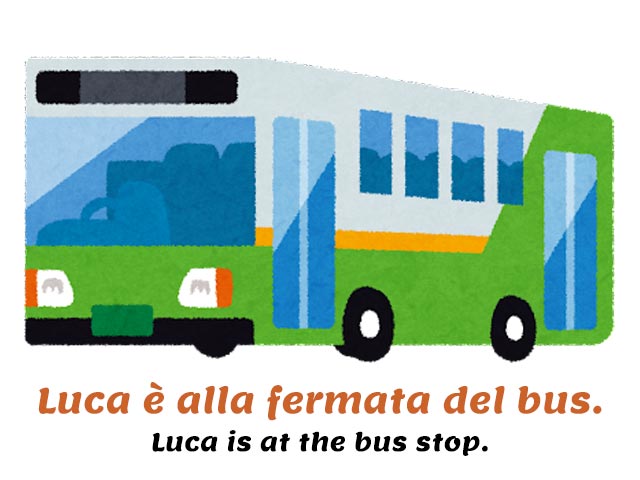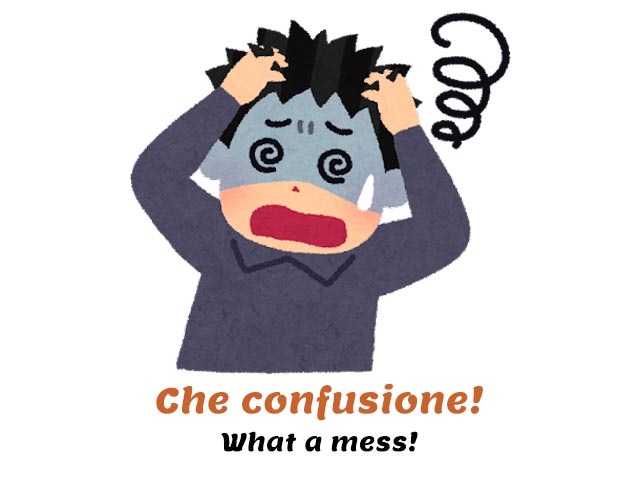Italian grammar
How to use the preposition in
Let me start with a general explanation of how prepositions work in this language.
Every preposition in Italian can be either semplice, simple, or articolata, “with an article”.
Italian simple prepositions are what you probably already know as prepositions: DI, A, DA, IN, CON, SU, PER, TRA, FRA.
Sono di Torino.
I’m from Turin.
If necessary, any of these prepositions can be followed by an indefinite article, which is placed in front of the preposition as a separate word.
Questa è la pagina di un libro.
This is the page of a book.

However, when used in a sentence, DI, A, DA, IN and SU cannot be followed directly by a definite article. The definite article merges with these prepositions to form what is called a preposizione articolata, “preposition with an article”.
Le pagine del libro sono strappate.
The pages of the book are torn.
Gli occhi della maestra sono azzurri.
The teacher’s eyes are pale blue.
You cannot say:
Le pagine di il libro sono strappate.
Gli occhi di la maestra sono azzurri.
Remember: if you need to use a definite article before DI, A, DA, IN and SU, you must merge the article with the preposition itself.
PER, TRA and FRA are never fused with a definite article, so they exist only in their simple form.
C’è una tavola calda tra la lavanderia e il supermercato.
There’s a diner between the laundry and the supermarket.
Questo regalo è per te.
This gift is for you.

CON can only merge with the masculine singular article il to form the preposition COL. No other variants are allowed.
That said, how many variants are there of the preposition di in Italian? Have a look at the table below.
Preposition di in Italian
| Di | del | dello | della | dei | degli | delle |
| + | il | lo | la | i | gli | le |
Because there is a preposizione articolata for each definite article, there are a total of 7 variations of the preposition di in Italian.
For example, you can say…
Il Signore degli Anelli è il mio libro preferito.
The Lord of the Rings is my favorite book.
Luca è alla fermata dell’autobus.
Luca is at the bus stop.

Don’t worry. It all sounds so tiresome, but I assure you it’s not!
Now that we’ve seen how to use the preposition di in Italian, let’s see when you can use it.
When to use the preposition di in Italian
As you probably already know, the Italian preposition di is roughly equivalent to the English preposition of. However, there are many cases where this rule does not apply.
At first glance, it can be difficult to understand when and how to use this preposition. However, as you will see, there are a number of rules that tell you exactly when to use di in a sentence. You must use di and its variants with an article…
- as a partitive article to indicate quantity
- to introduce the owner of something
- to indicate the city you are from when using essere
- to introduce a reason or a state of being
- after comparatives (“than”)
- to describe what something is made of
- to indicate the age of a person
- before introducing parts of the day
- to introduce a topic
- before some infinitive verbs

Che confusione! This can be… quite overwhelming, so let me give you some real-life examples for each of the given situations.
Preposition di in Italian for each situation
Asa partitive article to indicate quantity, as a synonym for the English word some…
Ho preparato degli spiedini per stasera.
I have prepared some meat skewers for tonight.
Sono rimasti dei pasticcini nel frigo.
There are some pastries left in the fridge.
Delle ragazze stavano chiacchierando in fondo al corridoio.
Some girls were chatting down the hall.
To introduce the owner of something…
La coda del cane è bianca con macchie marroni.
The tail of the dog is white with brown spots.
Il salotto di casa mia è molto ampio.
The living room in [of] my house is very big.
Mi piacciono i libri di Stephen King.
I like Stephen King’s books.

To indicate the city you are from when using essere…
Io sono di Livorno, e tu?
I’m from Livorno, are you?
Sono di Firenze. Piacere di conoscerti!
I’m from Florence. Nice to meet you!
To introduce a reason or a state of being…
Sto morendo di caldo. Puoi aprire la finestra?
I’m dying of heat. Can you open the window?
Molte persone muoiono di fame ogni giorno.
Many people die of hunger every day.

After comparatives, translating the English word than…
Mio fratello è più alto di me.
My brother is taller than me.
Alessandro è il più bravo della classe.
Alexander is the best (student) in the class.
Il ghepardo è più veloce del leone.
A cheetah is faster than a lion.
To describe what something is made of…
Questo capanno è di legno.
This shed is made of wood.
I bicchierini di plastica inquinano l’ambiente.
Plastic cups pollute the environment.
To indicate the age of a person…
Qual è il regalo migliore per una bambina di 5 anni?
What is the best present for a 5-year-old girl?
Demetrio è un ragazzo di 16 anni.
Demetrio is a 16-year-old boy.

Before introducing parts of the day…
Di sera mi piace coricarmi sul divano e guardare la tv.
At night I like to lie down on the couch and watch TV.
Erano le tre del pomeriggio quando è arrivato il postino.
It was three o’clock in the afternoon when the postman arrived.
To introduce a topic…
Abbiamo parlato di tante cose.
We talked about many things.
A Paolo piace parlare di treni a vapore.
Paul likes to talk about steam trains.
Before some infinitive verbs…
Non ti ho detto di chiudere la finestra, ma di chiudere le tende!
I didn’t tell you to close the window, but to close the curtains!
Sono stanco. Penso di andare a letto presto.
I am tired. I think I’ll go to bed early.

These are the main rules you need to follow to use the preposition di correctly in Italian. And if you’re still not sure if you can use it in a sentence, remember that the other Italian prepositions have their own rules. You can go by exclusion, andare per esclusione!
More free Italian resources
You might want to keep learning Italian online with these free Italian resources:
❤️ If you liked this guide on the preposition di in Italian, share it with your friends!


